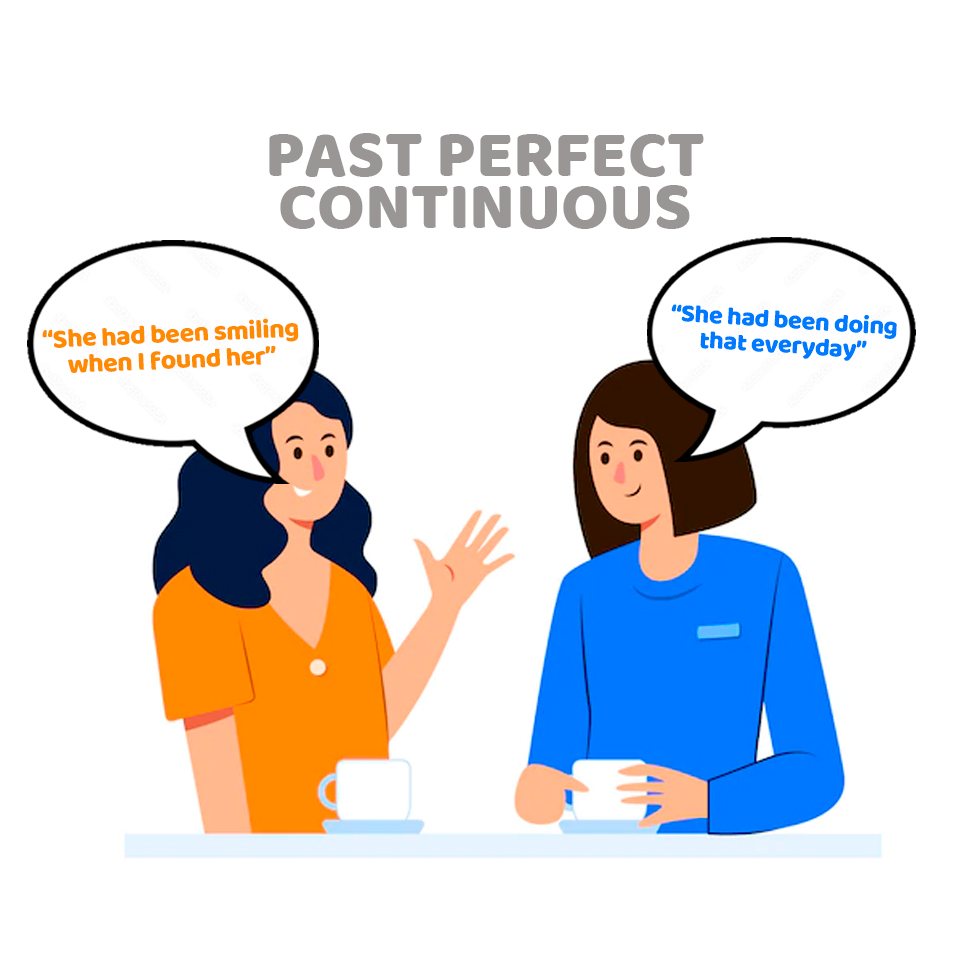¿Qué es past perfect continuous? ¿Cómo se usa?
Hoy aprenderemos una de las estructuras más largas del inglés en uno de los pasados más "viejos" del idioma.
¡Adelante!
¿Qué es "past perfect continuous o progressive"?
Es un tiempo gramatical compuesto que utilizamos para decir que algo había estado ocurriendo antes de otra actividad en el pasado.
*Cabe remarcar que ambas acciones han terminado.

He hecho esta línea que me gusta llamar: la línea de la vida, y en ella podemos observar que Past Perfect Continuous o Progressive es de los tiempos gramaticales más "viejos", este tiempo no funciona solo, necesita de un segundo tiempo para tener coherencia, va siempre acompañado de un "Past Simple".
¿Cuáles son los usos del "past perfect continuous o progressive"?
Hablar de situaciones que estuvieron ocurriendo antes que otra acción (enfatizando el tiempo/duración)
Mostrar una causa-efecto.
Es decir, algo que ocurrió en el pasado tuvo un efecto visible en el mismo.
Comencemos explicando el primer uso...
La estructura es la siguiente:
😊 + HAD BEEN + ING + ... (complement) + WHEN + 😊 + PAST SIMPLE + ... (complement)
Ejemplo 1:
Tuviste una cita con un amigo, quedaron de verse a las 4:00PM, pero él llegó a las 5:00PM, tiempo después tú le cuentas esto a tu mejor amiga:
It was awful, I had been waiting for him for AN HOUR when he arrived!
Fue horrible, ¡Lo había estado esperando por una hora cuando llegó!
Hablamos de una situación que estuvo ocurriendo en el pasado ANTES de otra situación en el pasado y además enfatizamos el tiempo.
Para el segundo uso...
La estructura es:
😊 + HAD BEEN + ING + ... (complement) + WHEN + 😊 + PAST SIMPLE + ... (complement)
Ejemplo 2:
He had been skipping class for three months, so he was in blank when the teacher asked him how to solve the problem.
Él se había estado saltando las clases por tres meses, así que estaba en blanco cuando el maestro le preguntó cómo resolver el problema.
(Y este es un ejemplo, no se salten clases)
Que este alumno imaginario no entrara a sus clases port anto tiempo tuvo consecuencias en algún momento del pasado.
Y esto, es past perfect continuous.


Aprendamos más sobre gramática😉
El Past perfect continuous o pasado perfecto continuo / pretérito pluscuamperfecto continuo en español es un tiempo gramatical que tiene un nombre largo, pero es muy sencillo de entender. Este es muy utilizado en nuestro día a día y por eso hoy, vamos a adentrarnos en este tema.
¿Cuándo utilizarlo?
Para hablar de acciones que comenzaron en el pasado y continuaron hasta otro momento en el pasado.
Estructura gramatical
Pronombre + had been + verbo en pasado participio + complemento.
Ejemplos
I had been playing soccer for 10 years until I broke my leg.
She had been working for the company for 3 months when she left to Spain.
We had been dating for 2 weeks when he broke up with me.

Let´s Know the Past Perfect Continuous

A past in the past!
it is used for an action that was being performed or occurred in the past before another action already in the past.
Affirmative Form
Subject + had + been + verb in -ing form
LONG FORM | SHORT FORM |
|---|---|
I had been working | I'd been working |
You had been working | You'd been working |
He had been working | He'd been working |
She had been working | She'd been working |
It had been working | It'd been working |
We had been working | We'd been working |
You had been working | You'd been working |
They had been working | They'd been working |
Negative Form
The negative has two forms:
LONG FORM | Subject + had + NOT + been + verb + ing + ... |
|---|---|
SHORT FORM | Subject + hadn't + been + verb + ing + ... |
LONG FORM | SHORT FORM |
|---|---|
I had NOT been working | I hadn't been working |
You had NOT been working | You hadn't been working |
He had NOT been working | He hadn't been working |
She had NOT been working | She hadn't been working |
It had NOT been working | It hadn't been working |
We had NOT been working | We hadn't been working |
You had NOT been working | You hadn't been working |
They had NOT been working | They hadn't been working |
EXAMPLES
I hadn't been painting your house. |
You had not been teaching me anything. |
He hadn't been living here. |
She had not been reading my book. |
It hadn't been raining since April. |
We had not been playing football. |
You had not been gardening all day. |
They hadn't been waiting for two hours. |
Express an action in the past
Easy if you follow the rules and practice with us


